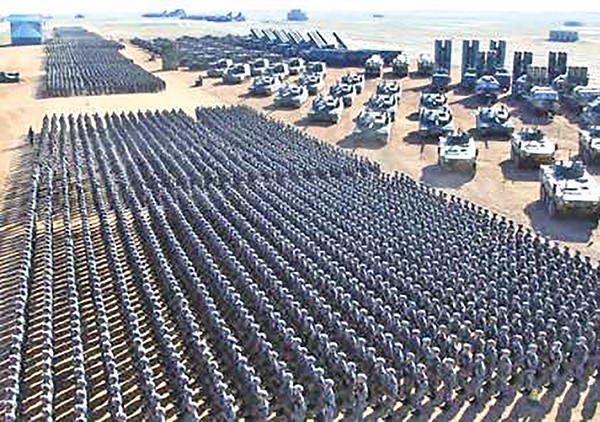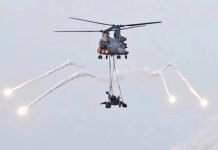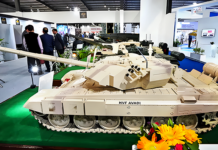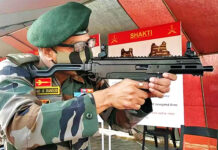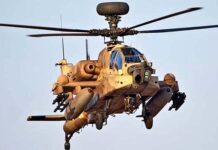Global military expenditure saw its biggest uptick in a decade in 2019 rising to $1.9 trillion, according to the latest survey by the Swedish Peace Research Institute (SIPRI) published on Monday (27 April), marking the first year two Asian countries were among the top three spenders. Global military expenditure was 7.2% higher in 2019 than it was in 2010, showing a trend that military spending growth has accelerated in recent years, SIPRI said. This was the highest level of spending since the 2008 global financial crisis and probably represents a peak in expenditure.
According to the researchers, the total amount for 2019 represents an increase of 3.6% from 2018 and the largest annual growth in spending since 2010, making military spending reach the highest point since the end of the Cold War. The researchers based their calculations on official government information, such as that found in national budgets. A country’s military expenditure as a share of GDP-also known as the military burden-is the simplest measure of the relative economic burden the military places on that country.
Globally, countries spent a total of $1.917 trillion on defence in 2019, equating to 2.2% of global gross domestic product, or $249 per citizen.
Largest Spenders
The five largest spenders in 2019, which accounted for 62% of expenditure with $1.2 trillion, were the United States, China, India, Russia and Saudi Arabia.
For the first time, two Asian countries were among the top three, with China and India spending an estimated $261 billion (up 5.1%) and $71.1 billion (up 6.8%) respectively. While US military spending declined by 15% overall over the past decade, Chinese increased by 85% between 2010 and 2019.
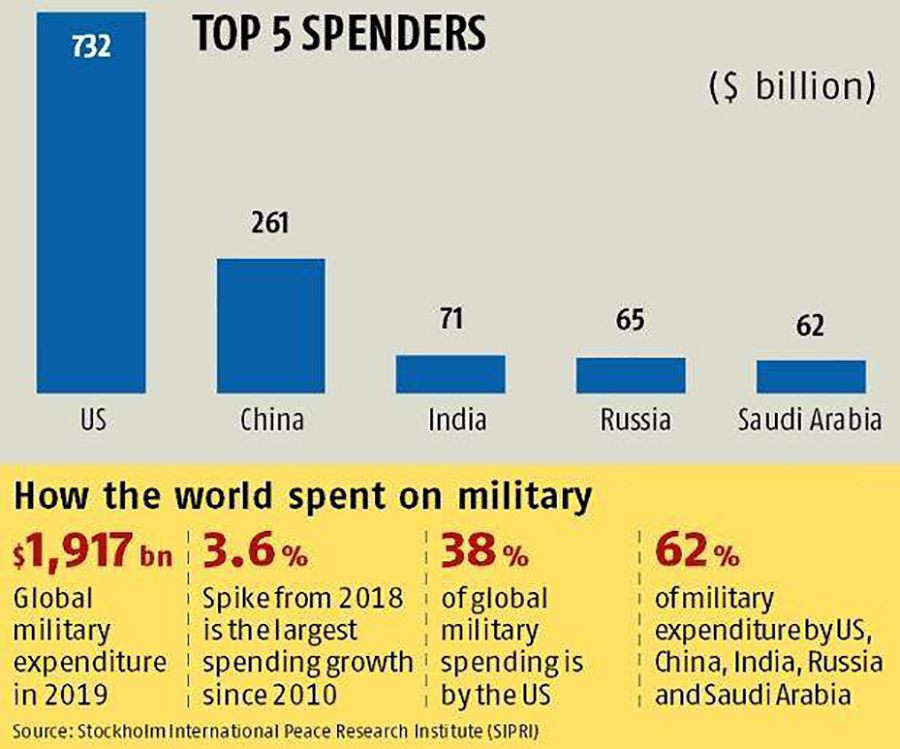

In addition to China and India, Japan ($47.6 billion) and South Korea ($43.9 billion) were the largest military spenders in Asia and Oceania. Military expenditure in the region has risen every year since at least 1989.
Despite various armed conflicts, spending in the Middle East decreased by 7.5%. However, the SIPRI report has only partially recorded expenditure in the region since 2015 as no reliable data has been available for Yemen, Qatar, Syria and the United Arab Emirates.
US Defence Expenditure
Military spending by the United States grew by 5.3 per cent to a total of $732 billion in 2019 and accounted for 38 per cent of global military spending. The increase in US spending in 2019 alone was equivalent to the entirety of Germany’s military expenditure for that year.
For the US it marked the second year of growth with 5.3% after seven years of decline, making the country alone accounting for 38% of global spending. The increase was due to recruitment of additional personnel and nuclear and conventional weapons modernisation and return to a competition of the great powers.
European Countries
In Europe, expenditure rose more rapidly than in any other region by a total of 5% compared to 2018 and 8.8% to 2010, amounting to a total expenditure of $356 billion. In Asia and Oceania, expenditure grew by 4.8%, in North and South America by 4.7%.
Five of the world’s 15 largest military spenders are in Europe: Russia (rank 4), France (rank 6), Germany (rank 7), the UK (rank 8) and Italy (rank 12).
The French rise in 2019 by 1.6% to reach $50.1 billion followed the adoption of the Military Planning Law for 2019-25, which aims to bring France’s military spending in line with the NATO target of 2% of GDP by 2025.
Germany’s military spending rose by 10% in 2019 to $49.3 billion, the highest growth among the top 15 with almost 50 billion spent on defence in 2019. Overall Germany was also the country with the highest expenditure in the EU. According to the report, German military spending in 2019 was the highest since 1993, when the military burden was 1.7% of GDP compared to currently only 1.3%,
The growth in German military spending can partly be explained by the perception of an increased threat from Russia, shared by many North Atlantic Treaty Organization (NATO) member states . Germany will reach a NATO defence spending target by 2031, its defence minister said on Thursday (7 November), missing a 2024 deadline agreed by the allies who are under heavy US pressure to beef up their military budgets. The total military spending by all 29 NATO member states was $1.035 trillion in 2019.
There were sharp increases in military expenditure among NATO member states in Central Europe: for example, Bulgaria’s increased by 127 per cent-mainly due to payments for new combat aircraft-and Romania’s rose by 17 per cent. Total military spending by all 29 NATO member states was $1035 billion in 2019.
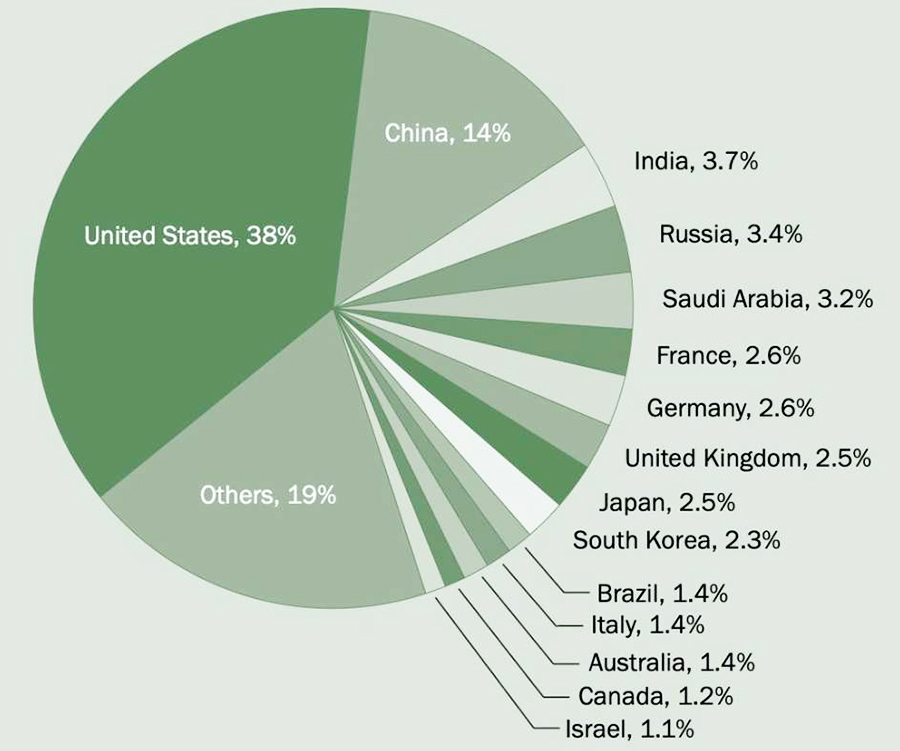

Poland, which accounted for 38% of the Central Europe total in 2019, increased its military spending by 51% over the decade 2010-19.
In 2019, Bulgaria had the highest relative increase in military spending of any country in the world with 127%, mainly due to payments for eight new combat aircraft.
UK’s military expenditure was unchanged in 2019 at $48.7 billion, but with 1.7% of GDP at its lowest level since 1950.
European countries buying more and more American fighter planes. All of Europe finds American fighter planes attractive, with first Slovakia and Romania and soon Bulgaria and Croatia opting to purchase these machines.
Russia
In 2019 Russia was the fourth-largest spender in the world and increased its military expenditure by 4.5 per cent to $65.1 billion. At 3.9 per cent of its GDP, Russia’s military spending burden was among the highest in Europe in 2019.
Post Covid-19 Spending
As the world heads for a potential global recession, governments will have to weigh military spending against other sectors, such as healthcare and education. It is highly likely that this will really have an impact on military spending. But the fall in spending would, however, not last.
In Europe, NATO has encouraged its members to maintain their military spending despite the economic shock of the Covid-19 pandemic, suggesting that military can play a role in helping to mitigate the crisis.
Several European countries had used their armed forces to enforce checks after introducing border controls in an attempt to contain the outbreak.
In 2019, spending targets of 2% GDP were fulfilled by only eight European NATO members, according to the Alliance’s annual report.
Africa
The combined military expenditure of states in Africa grew by 1.5 per cent to an estimated $41.2 billion in 2019-the region’s first spending increase for five years.
Armed conflict is one of the main drivers for the volatile nature of military spending in sub-Saharan Africa. For example, in the Sahel and Lake Chad region, where there are several ongoing armed conflicts, military spending in 2019 increased in Burkina Faso (22 per cent), Cameroon (1.4 per cent) and Mali (3.6 per cent) but fell in Chad (-5.1 per cent), Niger (-20 per cent) and Nigeria (-8.2 per cent). Among Central African countries that were involved in armed conflict, military spending in 2019 rose overall. The Central African Republic (8.7 per cent), the Democratic Republic of the Congo (16 per cent) and Uganda (52 per cent) all increased military spending in 2019.
India Military Expenditure
India, with the third-largest military budget, increased spending by 6.8% – the highest increase in the top five. India’s military expenses have risen significantly over the past few decades. Over the 30-year period between 1990 and 2019, its spending grew by 259 per cent. In 2010-19 decade, the expenses grew by 37 per cent, the report said. However, the country’s military burden fell from 2.7 per cent of the Indian GDP in 2010 to 2.4 per cent in 2019.
India’s “tensions” and “rivalry” with Pakistan and China are among the main reasons for its increased military expenditure. India’s military spending grew by 6.8 percent to $71.1 billion in 2019, according to the SIPRO report on “Trends in World Military Expenditure, 2019”. This was the highest military spending in South Asia.
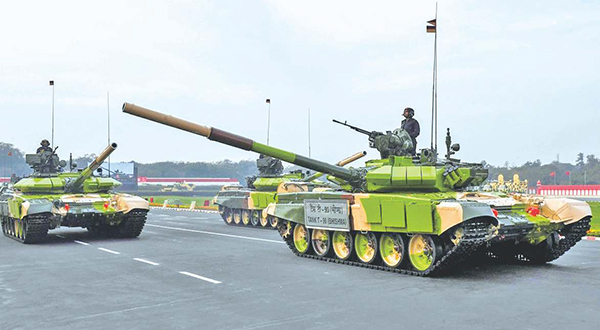

India’s military spending has also grown due to an expanding salary and pension bill of its armed forces personnel and capital expenditure for procuring warships, submarines, aircraft and helicopters.
In 2018, India was the fourth largest military spender, a spot below Saudi Arabia. India had spent $66.5 billion in 2018. In 2019, Saudi Arabia’s decrease and the increase in Russia’s spending (4.5 per cent) led to Russia moving to fourth position from fifth, while Saudi Arabia fell from third to fifth.
Pakistan
In comparison, Pakistan’s military expenditure rose by 70% over the decade 2010-19, to reach $10.3 billion while the military burden increased from 3.4% of GDP in 2010 to 4% in 2019, says the report. Pakistan was at the 24th position in 2019 compared to 19th in 2018.
China
China, the world’s second-largest military spender, is estimated to have allocated $261 billion to the military in 2019-equivalent to 14 per cent of the global military expenditure. Its military spending in 2019 was 5.1 per cent higher than in 2018 and 85 per cent higher than in 2010. “China’s military expenditure has increased continuously since 1994 (for 25 consecutive years). The growth in its military spending has closely matched the country’s economic growth. Between 2010 and 2019, China’s military burden remained almost unchanged, at 1.9 per cent of its GDP,” the SIPRI report stated.


